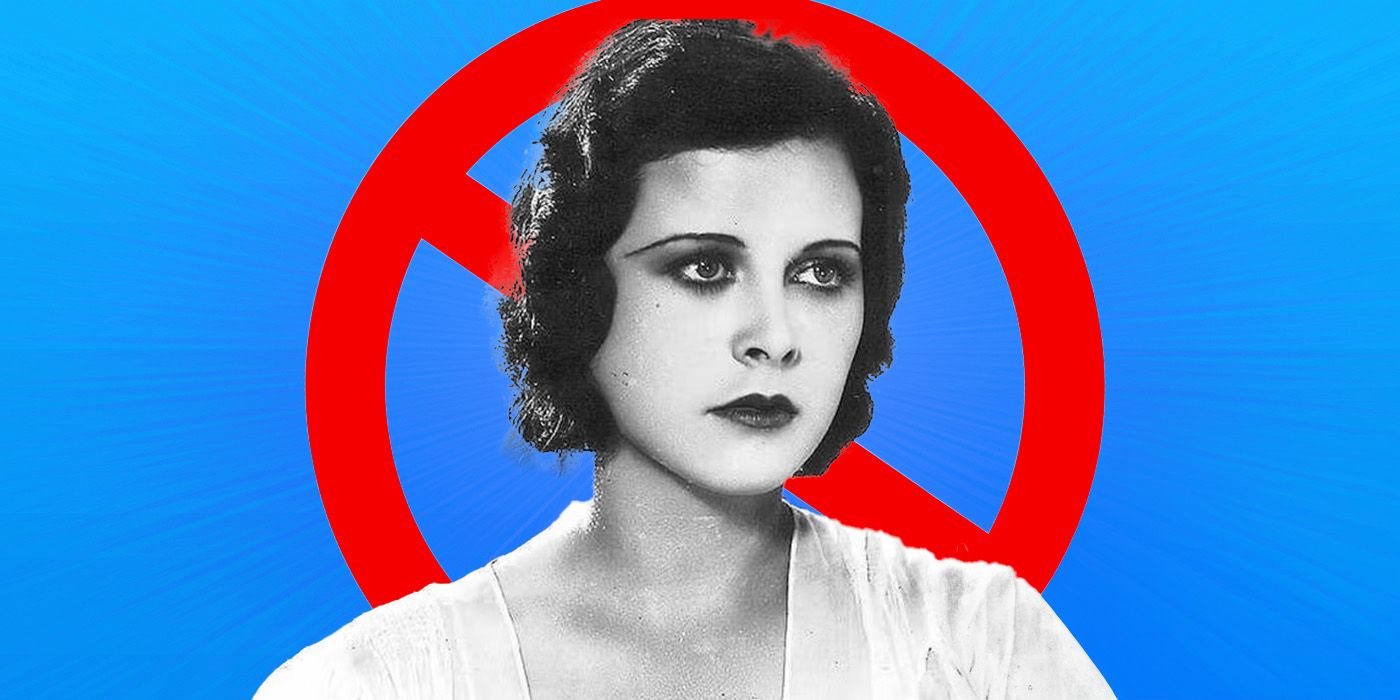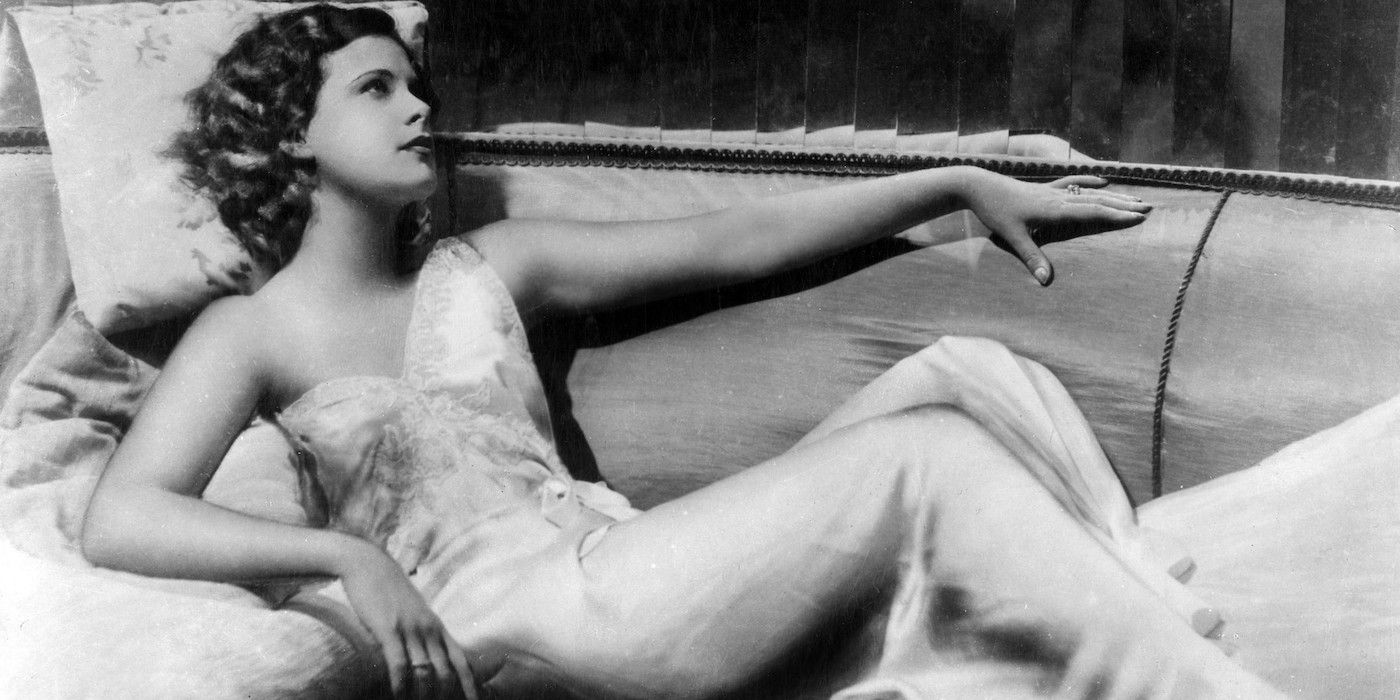The Big Picture
- Ecstasy is considered the first non-pornographic film to depict sexual intercourse and the female orgasm.
- The film caused controversy and was banned in many countries, including the U.S., due to its nudity and sexual content.
- The controversy surrounding Ecstasy launched Hedy Lamarr’s career and eventually led her to Hollywood, where she became a successful actress and inventor.
You know you’ve made a controversial movie when the Pope weighs in – and that was certainly the case for 1933’s Ecstasy by Czech director Gustav Machatý. So, what exactly got Pope Pius XI so upset? Roughly a minute of nudity and the female orgasm. While the film is extremely tame by modern standards, people were a lot less relaxed about nudity and sexuality (especially female sexuality) 90 years ago, and Ecstasy is generally considered the first non-pornographic movie to depict sexual intercourse and female orgasm. What followed was a whole load of controversy, ranging from lead actress Hedy Lamarr (known at that time as Hedy Kiesler) claiming to be tricked into the nude scenes, to her arms dealer husband attempting to purchase every print of the film, to bans across the world — including the United States under the Hays Code.
Was ‘Ecstasy’ the First Movie to Include a Sex Scene?
Ecstasy is widely understood to be the first non-pornographic film to include a sex scene. However, pinpointing exactly what that means can be tough. Its other claim to fame, the first depiction of the female orgasm on screen, is a bit clearer cut. Shockingly, catering to the sexual needs of women was not top of mind for filmmakers in the early 20th century. Showing sex and nudity on film began essentially as soon the technology was invented – it even predates film technology, with Eadweard Muybridge utilizing nude images in his zoopraxiscope as early as the 1880s. French pioneer Georges Méliès included simulated nudity in his 1987 short After the Ball, while Australian swimmer Annette Kellerman appeared fully nude (with some strategically placed long hair) in 1916’s A Daughter of the Gods and Clara Bow – the inspiration for Margot Robbie’s Nellie LaRoy in Babylon – bathed nude in 1927’s Hula. There are a number of other examples from this period, but none that could be described as non-pornographic including a sex scene.
Machatý’s Ecstasy is not overly explicit, particularly by modern standards, and the nudity that is on-screen is brief. The main culprit is a scene of joy and liberation in which Eva (Lamarr), free of her short, loveless marriage to Emil (Zvonimir Rogoz), goes into the woods to skinny-dip. When her horse runs off with her clothes on its back, Eva chases after it and is briefly exposed to the audience and Adam (Aribert Mog). The character names are not terribly subtle. What follows is a relationship of passion between Eva and Adam that is the opposite of her celibate marriage to Emil. When Eva sleeps with Adam, the scene is distinguished by its focus on Eva’s face – the previously mentioned first female orgasm on film, which censorship papers from the Hays office called “the most candid love scene ever committed to celluloid”. The rest of the movie turns into something of a tragedy that includes suicide and heartbreak, but enough had already happened to cause outrage.
What Was the Controversy Surrounding ‘Ecstasy’?
Following a screening at the Venice Film Festival in 1934, where Machatý actually won the award for best director, Pope Pius XI denounced the film, resulting in a ban in Italy – Benito Mussolini supposedly requested a private screening. It was also banned in Germany, though Hedy Lamarr being Jewish probably didn’t help on that front. In the US, the film was condemned by the National Legion of Decency and, despite 10 months of lobbying, the Hays office refused to give it a seal of approval, which meant it could not gain a wide release. Censor Joseph Breen had a pretty dramatic take on the movie, calling Ecstasy “highly – even dangerously – indecent”. While the movie could not be seen widely without the Hays Code seal, the distributor still tried to show it in arthouse cinemas around the country, with little success. Pennsylvania banned Ecstasy completely, New York banned it, then decided to allow it, and Maryland forced a host of eliminations to let it through.
The controversy didn’t stop with the censors. Lamarr herself claimed that she had been duped by Machatý, with nudity nowhere in the script. According to Lamarr, the nude scenes in the woods were meant to only be long shots, and the close-ups were achieved with telephoto lenses against her wishes. However, other members of the production disputed her claims, with a member of the crew quoted in Ruth Barton’s Hedy Lamarr: The Most Beautiful Woman in Film as saying: “As the star of the picture she knew she would have to appear naked in some scenes. She never made any fuss about it during the production.”
How Did ‘Ecstasy’ Impact Hedy Lamarr’s Career?
When Ecstasy debuted, it launched Lamarr into both stardom and infamy, and she retreated to the stage to get away from movies. This is where she met her first husband, arms dealer Friedrich Mandl, who, according to Lamarr’s autobiography, Ecstasy and Me, would host both Mussolini and Adolf Hitler at parties. Mandl reportedly attempted to purchase every print of Ecstasy so no one else would be able to see it. Despite spending around $280,000 (roughly $6.5 million adjusted for inflation), his attempts failed. She also describes him in her book as extremely controlling, which seems a fair description for a Nazi-collaborating arms dealer who tried to kill her acting career, so Lamarr fled to Paris and eventually London.
While in London, Lamarr met the head of MGM, Louis B. Mayer, who gave her a contract and brought her to Hollywood – but changed her name to skirt the controversies around Ecstasy. This is where Hedy Lamarr was born, and her career really took off, starring alongside the likes of Spencer Tracy, Clark Gable, and Jimmy Stewart. Lamarr was also an inventor who helped develop and patent a frequency-hopping system for radio-controlled torpedoes during World War II with George Antheil. While the method was never applied to torpedoes as intended, it did get implemented for secure military communications in the 1960s. According to some sources, the Lamarr-Antheil patent helped form the basis of what would become Bluetooth and Wi-Fi. Had Lamarr not appeared in the controversial Ecstasy, she may never have made her way to the US and helped come up with the idea.
Ecstasy is available to stream on Prime Video in the U.S.
























































![Key Metrics for Social Media Marketing [Infographic] Key Metrics for Social Media Marketing [Infographic]](https://www.socialmediatoday.com/imgproxy/nP1lliSbrTbUmhFV6RdAz9qJZFvsstq3IG6orLUMMls/g:ce/rs:fit:770:435/bG9jYWw6Ly8vZGl2ZWltYWdlL3NvY2lhbF9tZWRpYV9yb2lfaW5vZ3JhcGhpYzIucG5n.webp)




















